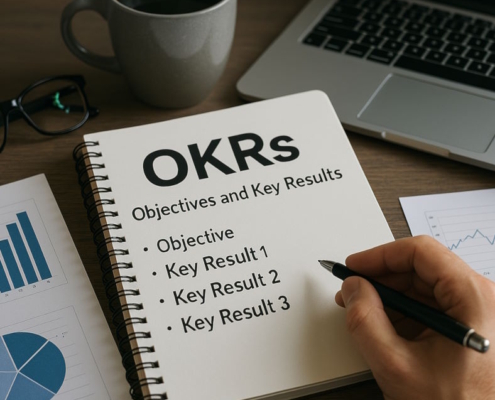Introduction
Every home-based food business in California is required to have a food permit to sell food from home California, approved under state law. You definitely need a license, plus several types of permits and be subjected to visits by health officials and the like. Get a cottage food permit to sell what you make direct to customers or retail markets in California.
Law
California has been a leader in the cottage food movement since the passage of the California Homemade Food Act in 2012. Over the years, reforms have expanded opportunities for home-based food businesses. For example, in 2023, legislation doubled the gross annual sales cap for Microenterprise Home Kitchen Operations (MEHKOs) from $50,000 to $100,000 (adjusted for inflation each year) and increased the weekly meal cap from 60 to 90. The same reforms clarified that MEHKOs could sell appetizers, beverages, and desserts, which were previously prohibited. To take advantage of these opportunities, a cottage food producer must apply for the appropriate license to sell homemade food in California, whether for direct or indirect sales.
Homemade Food that Can Be Sold in California
Under California law, only certain types of food may be produced in a home kitchen for sale. These include:
- Baked goods without dairy or meat fillings (e.g., bread, cookies, churros, pastries)
- Candy
- Dried fruit
- Chocolate-covered nuts and dried fruit
- Fruit pies
- Granola, trail mixes
- Herbs
- Honey
- Jams, preserves
- Nut butters
- Dried pasta
- Popcorn
- Vinegar, mustard
- Coffee, tea
The California Department of Health provides a comprehensive list of the foods that can be legally prepared in a home kitchen. Cottage food producers also have the option to petition to add new items to the list, offering flexibility as the industry evolves. Regardless of the type of food produced, obtaining a license to sell homemade food in California is essential to operate within the law.
Selecting a Business Structure
Typically, home-based food businesses are small, and the state encourages a smaller structure. California requires that cottage food businesses be run by an individual operator only, and there can be no more than one employee. Running a very small business limits one to a sole proprietorship, realistically. However, being a sole proprietor means that one is personally responsible for every aspect of the business. To mitigate risks, many home-based food producers consider forming a limited liability company (LLC) or a corporation, which protects personal assets in the event of a lawsuit. Additionally, before any structure can be formalized, one must secure a license to sell homemade food in California to meet legal and safety standards.
For example: Linda sells homemade peanut butter out of her home. Everyone in the community loves Linda’s peanut butter, and her business is thriving. However, a scare occurred when a boy with a peanut allergy consumed her product and ended up in the hospital. Although the boy recovered, his parents threatened legal action. To safeguard her personal assets, Linda decided to form an LLC, which would shield her from personal liability in such cases.
Licenses and Permits Required
To run a homemade food business in California, an individual must obtain a permit from the county health department. There are two types of permits:
- Class A Permit
A Class A permit allows direct sales to customers, such as at farmers’ markets or from home. Applicants must fill out a self-certification checklist, but kitchen inspections are not mandatory unless a complaint arises. A Class A permit is one of the most common types of licenses to sell homemade food in California for direct-to-consumer sales.
For example: Francis makes granola and applies for a Class A permit to sell it at local farmers’ markets. His trail mix becomes a community favorite.
- Class B Permit
A Class B permit is required for selling indirectly through third parties, such as restaurants or stores. Annual kitchen inspections are mandatory for this permit. Sales across county lines are permissible only if both counties allow it. This type of license to sell homemade food in California is ideal for those who prefer indirect sales methods.
For example: Jonathan bakes gourmet cookies but prefers to partner with a grocery store to sell them. He secures a Class B permit and his cookies become a top-seller at the local market.
Food Handler’s License and Safety Standards
Cottage food operators must complete a food processor course approved by the California Department of Public Health within three months of obtaining a permit. Additional health and safety regulations include:
- No domestic activities, such as laundry or entertaining, during food preparation.
- Children, pets, and sick individuals are prohibited from the kitchen during food prep.
- Utensils and surfaces must be sanitized regularly.
- Smoking is prohibited in the kitchen.
Adhering to these regulations is mandatory for obtaining and maintaining a license to sell homemade food in California, ensuring that the business meets health and safety expectations.
Microenterprise Home Kitchen Operations (MEHKOs)
MEHKOs allow Californians to operate small-scale restaurants from their homes. These operations must follow strict regulations, including preparing and serving food on the same day and adhering to annual sales and meal caps. Participation depends on local county ordinances, so prospective operators should check their county’s policies. Operators must also acquire a specific license to sell homemade food in California under the MEHKO framework to operate legally and safely.
Homemade Food Business Insurance
Unique risks, such as food-borne illnesses or foreign objects in food, make insurance essential. General commercial liability insurance is recommended to cover employee injuries, customer claims, and other risks. Along with securing insurance, it is crucial for any food business to maintain an active license to sell homemade food in California, which demonstrates a commitment to industry standards.
Summary
California provides numerous opportunities for home-based food entrepreneurs. By staying informed about evolving laws, obtaining the necessary permits, and adhering to health and safety standards, cottage food operators can successfully navigate the industry while enjoying the benefits of a home-based business. Central to this process is obtaining a license to sell homemade food in California, which serves as a foundation for ensuring legal compliance and protecting public health.






























